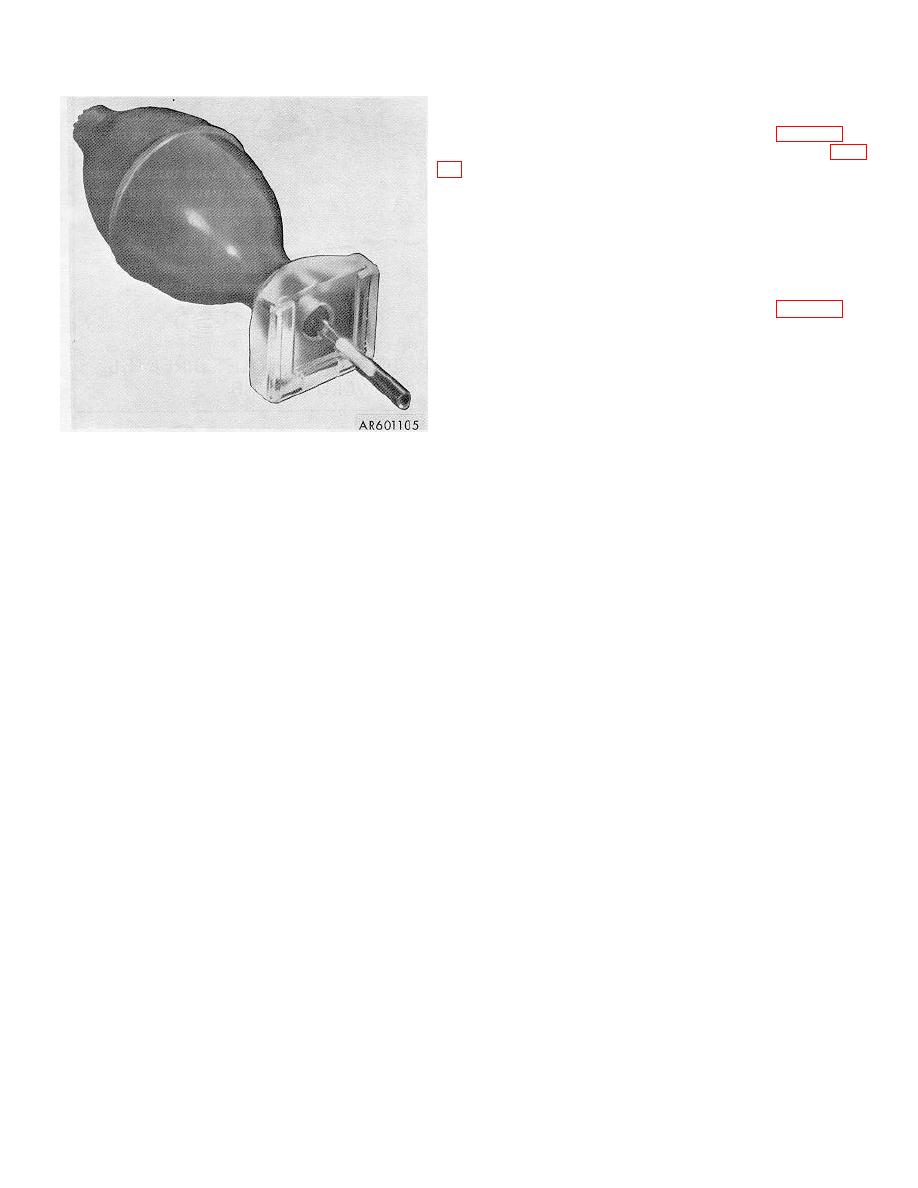
TM 3-6665-254-12
24. Test for G-Agent
negative (no yellow color) following detector ticket test (para
test. White-band detector tubes may be used if there is a
shortage of blue-band tubes. However, the white-band tubes
are not to be used to test for other than G agents.
b. Squeeze one drop of reagent solution from the
green-marked bottle into the banded end of the detector tube.
If yellow appears within 1 minute, G-agent is present.
25. Test for Mustard or CX Vapors
negative. Use a blue-band detector tube for this test.
Figure 10. Detector tube in position in adapter.
b. Snap both ends from the detector tube at [,he
scorings and press the unmarked end of the tube into the
adapter and with the detector tube pointing down, compress
the bulb sixty times. Remove the detector tube from the
Figure 10. Detector tube in position in adapter.
adapter.
c. Wait at least 2 minutes after sampling, then drop one
drop of reagent solution from the blue- .marked bottle into the banded end of the detector -.tube.
d. If the purple-blue ring or color appears, H, HD, HN, or HT is present. If a red-brown ring or color appears, CX is
present (a light brown color which fades within 15 seconds is not a positive test).
26. Test for L, ED, or MD
Use a yellow-band detector tube to determine whether L, ED, or MD is present in the area. 4-6
a. Snap both ends from a yellow-band detector tube at the scorings and press the unmarked end of the detector
tube into the adapter and with the detector tube pointing down, compress the bulb sixty times.
b. Remove the detector tube from the adapter and observe the color. If a blue-green ring or color is observed, ED
or a high concentration of L is present.
c. Squeeze one drop of reagent solution from the blue-marked bottle into the banded end of the detector tube. If a
blue or blue-green ring or color appears, L, ED, or MD (singly or in combination) is present.
27. Test for CG
Use a green-band detector tube to determine whether CG is present in the area.
a. Snap both ends from a green-band detector tube at the scorings and press the unmarked end of the tube into
the adapter and, with the detector tube pointing down, compress the bulb sixty times.
b. Remove the detector tube from the adapter and observe the color. If a green ring or color appears, CG is
present.
28. Test for AC
Use a red-band detector tube for the presence of AC in an area.
a. Snap both ends of the detector tube at the scorings and press the unmarked end of the detector tube into the
adapter and with the detector tube pointing down, compress the bulb sixty times.
b. Remove the detector tube from the adapter. If the blue ring or color appears in the detector tube, AC is present.
29. Test for Liquid Agents (Blister and Nerve Agents) On Surfaces
If the suspected surface contamination is in liquid form (puddles, small drops, or barely visible droplets), test for agent
with ABC-M8 VGH chemical agent detector paper.
a. Tear out a sheet of detector paper from the book.
b. Place the paper in contact with the suspected surface (blot-do not rub) and observe the color change, if any.
c. Compare the color change with the typical colors shown on the inside front cover of the book. Yellow indicates
the presence of G-agent, red indicates the presence of blister agents (H, L, and CX) and dark green indicates the
presence of V- agent.
4-6

